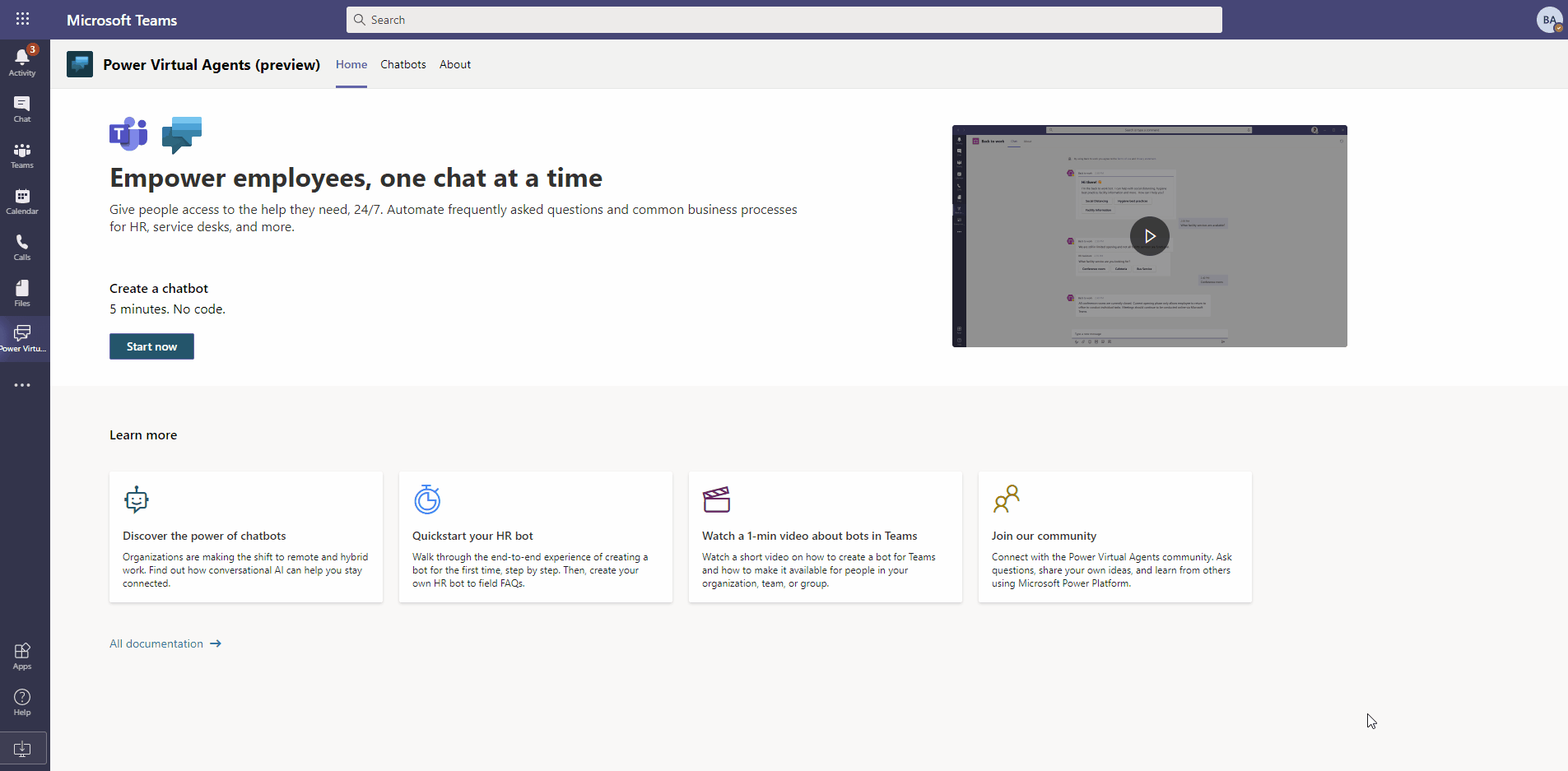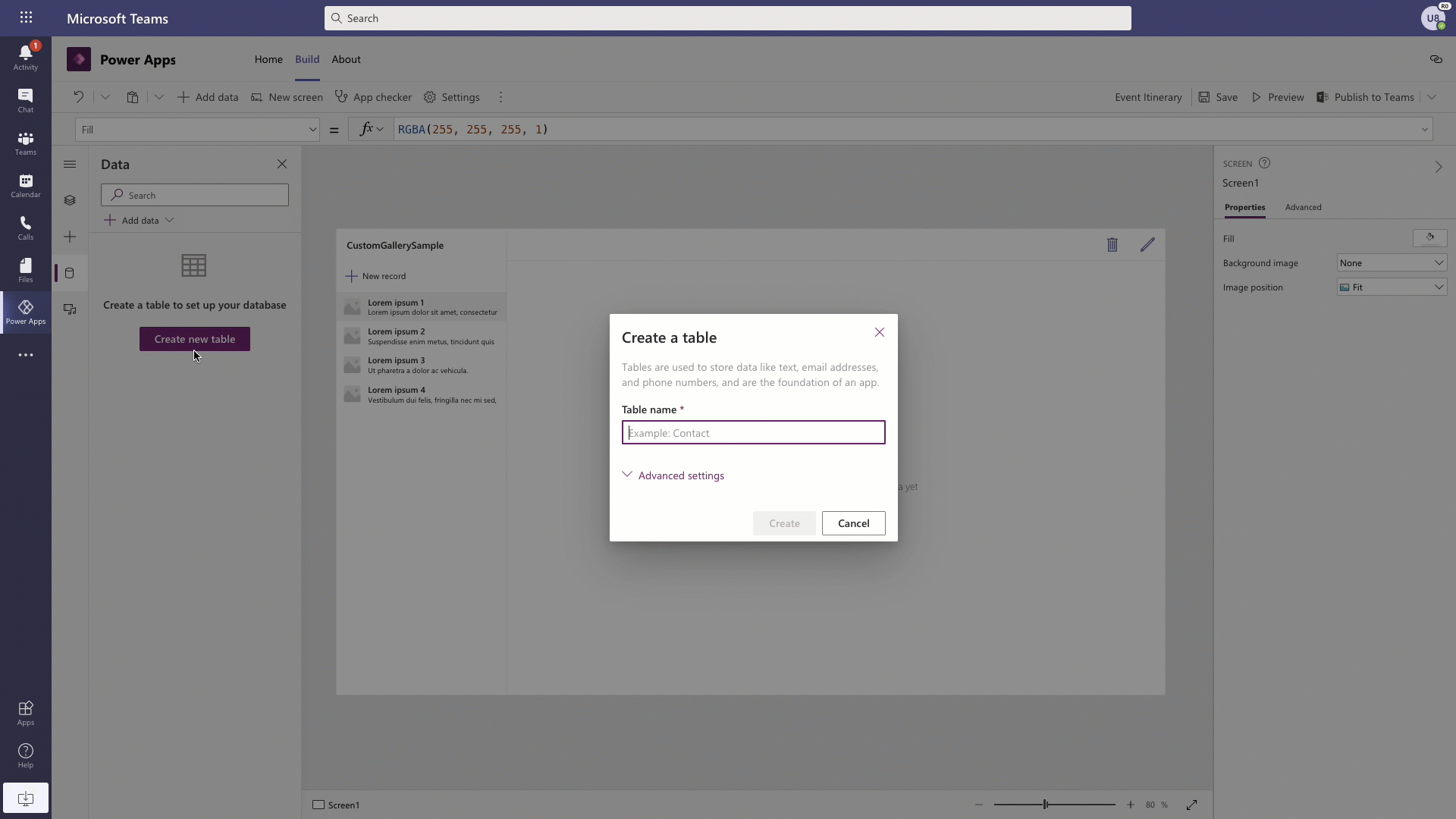Summary:
Many Microsoft customers like Lumen Technologies and Etihad are embracing low code tools in Microsoft Teams to accelerate their digital transformation. Also, companies such as Office Depot and Suffolk turned to low code apps to quickly adapt to the changing realities of the world over the past year.
Today we are excited to announce the General Availability of the next evolution of low code tools in Teams with the new Power Apps and Power Virtual Agents apps to help our customer continue their low cod journey. Also generally available today is Microsoft Dataverse for Teams (formerly known as Project Oakdale), a low code built-in data platform for Teams.
Build custom low code apps without leaving Teams
The new Power Apps app for Teams allows users to build and deploy custom apps without leaving Teams. With the simple, embedded graphical app studio, it’s never been easier to build low code apps for teams. You can also harness immediate value from built in teams app templates like the great ideas or inspections apps, which can be deployed in one click and customized easily.

Soon, you’ll be able to distribute apps to anyone in your organization. People on your team can collaborate to build apps and then share with everyone in their organization by publishing in the Teams app store. Also, we’re excited to announce that the apps you build with Power Apps will be natively responsive across all devices for an enhanced end to end user experience.
Low code chatbots in Teams are here to help
Chatbots are a great way to improve how users get work done. They are especially useful in Teams as they conversational nature of these bots blend into the flow of the chats you have with your teammates – chatting with a bot is as simple as chatting with your colleague. Some common uses for these bots within an organization include IT helpdesk, HR self-service, and onboarding help. These bots help you free up time, allowing people to focus on more high-value work.
Power Virtual Agents empower people in your organization to make bots with a simple no code graphical user interface. Starting today, with the now generally available Power Virtual Agents app for Teams, you can make bots within Teams with the embedded bot studio. You can now deploy these bots to teams or your entire organizations with just a few clicks.

With this more approachable way to create and manage bots, subject matter experts can build and use bots to help address common department-level needs that maybe weren’t substantial enough to get addressed by busy IT departments. Customers with select Office 365 subscriptions that include Power Apps and Power Automate will have access to Power Virtual Agents’ capabilities for Teams at no additional cost.
Dataverse for Teams – A new low code data platform for Teams
The new Power Apps and Power Virtual Agents apps for Teams can be backed by a new relational datastore – Dataverse for Teams. Dataverse for Teams provides a subset of the full Microsoft Dataverse (formerly known as CDS) capabilities but more than enough to get started building apps and bots for your organizations. Dataverse for Teams also improves application lifecycle management, allowing customers seamless upgrades to more robust offerings when their apps and data outgrow what comes with their Office 365 or Microsoft 365 licenses.

Also, IT professionals and Professional developers, can now use the Azure API Management connector and connect to data stored on Azure as part of their Microsoft and Office 365 licenses*.
Admin, security, and governance for your low code solutions in Teams
Microsoft Dataverse for Teams follows existing data governance rules established by the Power Platform and enables access control in the Teams Admin Center like any other Teams feature. Within the Teams Admin center, you can allow or block apps created by users at the individual level, group level, or org level – you can learn more here. The Power Platform admin center provides more detail on Power Platform solutions use and control, including monitoring dedicated capacity utilization.
Accelerate your transformation with Teams and Power Platform
We hope you are ready to start your Power Apps and Power Virtual Agents journey. For additional information on the content shared above and on the latest Teams platform news, please visit:
- Microsoft 365 Blog: Enhancing your Teams experience with the apps you need
- Microsoft Tech Community – Teams Blog: Growing momentum of Teams as a platform
- Microsoft Tech Community – Teams Blog: Start automating processes with the New Power Automate app for Teams
- Power Apps Blog: Microsoft Dataverse for Teams is now generally available
- Power Automate Blog: Easily create and manage flows with the new Power Automate App for Teams
- Webinar on 11/17/2020: Drive Better Meetings Experiences with Apps for Microsoft Teams
*Azure costs still apply
Date: 2020-11-16 17:00:00Z
Link: https://techcommunity.microsoft.com/t5/microsoft-teams-blog/low-code-apps-and-bots-in-microsoft-teams-with-power-apps-and/ba-p/1881938